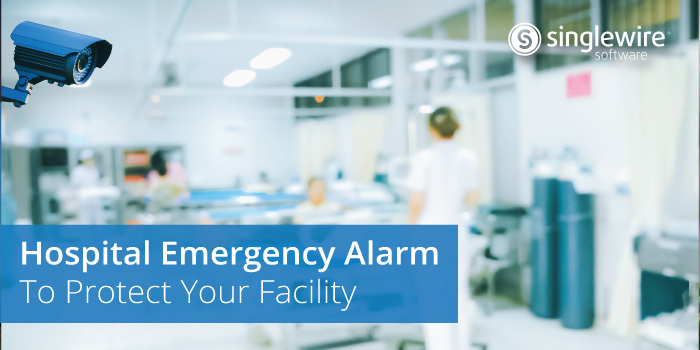Hospital Emergency Alarm Considerations
The safety and security of healthcare facilities are of utmost importance, especially in emergencies where quick and effective communication can make a significant difference. When it comes to responding to emergencies in a hospital setting, time is of the essence. A hospital emergency alarm tool can contribute to better protecting your hospital facility. In this post, we will explore the essential tools hospitals can implement to enhance their emergency alarm systems, especially highlighting panic buttons, text, audio, and visual alerts.
Panic Buttons: Initiating Swift Emergency Responses
Panic buttons are invaluable tools that empower hospital staff to initiate a hospital emergency alarm promptly. These buttons, strategically placed throughout the facility, officials can activate with a single press, instantly signaling the presence of an emergency. Whether it is a medical crisis, a security threat, or a natural disaster, panic buttons offer a quick and direct way to alert the entire hospital community.
Hospital officials can integrate panic buttons into wearable devices for medical staff, ensuring that emergency response is just a touch away. In critical situations, the ability to initiate an alarm rapidly can be a lifesaver. Hospitals can further enhance the effectiveness of panic buttons by connecting them to a comprehensive hospital emergency alarm system that includes text, audio, and visual alerts.
Text, Audio, and Visual Alerts for a Comprehensive Hospital Emergency Alarm
Communication is key during emergencies, and hospitals can leverage existing technology to ensure a comprehensive alert system. Text, audio, and visual alerts play a crucial role in distributing critical information to both staff and patients. By utilizing various communication channels, hospitals can maximize the reach of their emergency messages.
- Text Alerts: Sending text messages to mobile devices, desktops, and other communication devices ensures that hospital staff and administrators receive immediate updates about the emergency. Quick and concise text messages can provide essential information and instructions, facilitating a coordinated response.
- Audio Alerts: Broadcasting alarms through speakers strategically placed throughout the hospital ensures that everyone is aware of the emergency. Healthcare officials can customize loud and clear audio alerts based on the nature of the emergency, allowing for quick identification and response.
- Visual Alerts: Integrating visual alerts through digital signage and strobe lights enhances the visibility of emergency notifications. This is especially crucial in environments where noise levels may be high, ensuring that even those with hearing impairments or working in noisy areas can receive important information.
Connecting these alert systems ensures redundancy and increases the likelihood that every member of the hospital community will receive the emergency message, regardless of their location or mode of communication preference.
Integration with Existing Technology
Hospitals often have a complex network of existing technology, from phone systems to digital signage and desktop computers. An effective hospital emergency alarm system should seamlessly integrate with these technologies. This integration not only maximizes the utility of existing infrastructure but also ensures a faster and more efficient emergency response.
- Phones: Integrating with the hospital’s phone system allows for the widespread distribution of emergency messages through voice calls and text messages. Staff members carrying mobile devices can receive alerts directly on their phones, ensuring immediate awareness.
- Speakers: Utilizing existing speaker systems allows for wide-area coverage of audio alerts. Healthcare officials can broadcast emergency messages throughout the facility, reaching staff and patients in various departments and areas.
- Strobes and Digital Signage: Integrating with visual alert systems, such as strobes and digital signage, enhances the visibility of emergency messages. Visual cues can attract attention and guide individuals to safety, complementing text and audio alerts.
- Computers: Desktop notifications can provide real-time updates to hospital staff working on computers, ensuring that no one misses critical information. The seamless integration of these technologies creates a cohesive emergency alarm system that maximizes the chances of a swift and coordinated response.
By utilizing existing technology and integrating various communication channels, hospitals can create a comprehensive hospital emergency alarm system that reaches every corner of the facility. The seamless coordination of panic buttons and alert systems ensures that in times of crisis, hospital staff can respond promptly, healthcare staff can protect patients, and the overall well-being of the hospital community is prioritized.
At Singlewire Software, we understand the critical importance of hospital emergency alarm systems. Our commitment is to provide tools that empower hospitals to respond effectively to emergencies and create a safer environment for both staff and patients. For more information on how mass notification systems serve healthcare facilities with tailored safety and security solutions, visit our Healthcare page.
